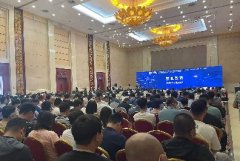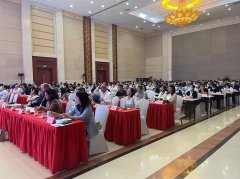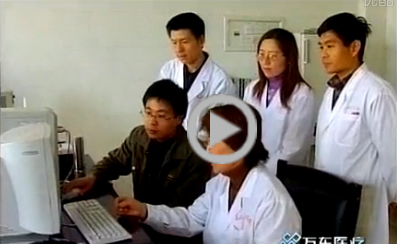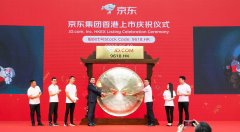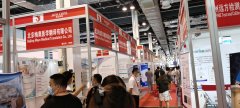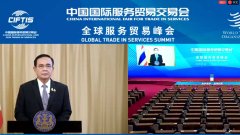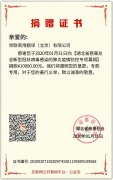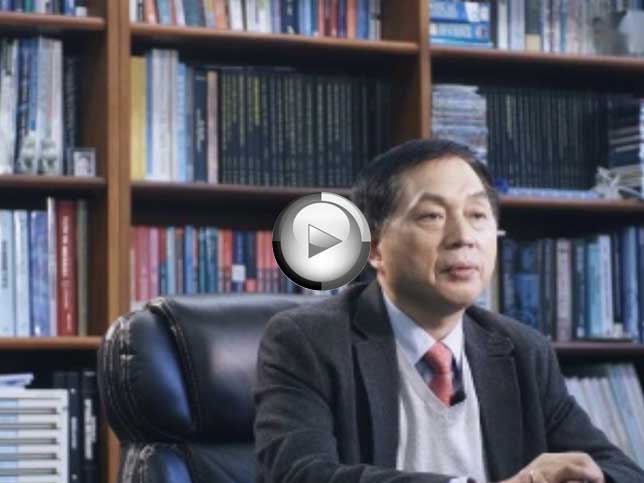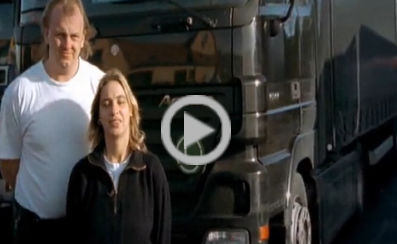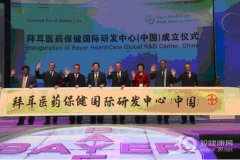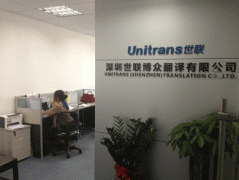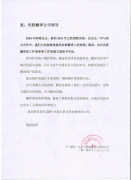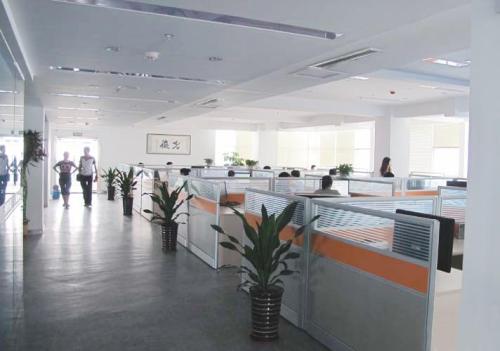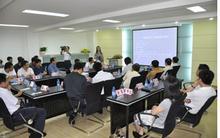上海翻译公司完成技术文件英中翻译
时间:2020-05-25 08:14 来源:未知 作者:dl 点击:次
上海翻译公司完成技术文件英中翻译

1. Title
Automated welding machine.
Ring welding tooling for Honda MY16
Manufacturing Engineer – First Contact Site E - mail Phone
Piotr Gałan BWI TCK piotr.galan@bwigroup.com
+48 881 824 225
Engineering Contacts Site E - mail Phone
Roman Bielski BWI TCK – ME Team Leader roman.bielski@bwigroup.com +48 600 304 459
Olga Leśniak BWI TCK – Industrial Engineer olga.lesniak@bwigroup.com +48 883 350 316
Zhou Yanli BWI Fangshan - ME yanli.zhou@bwigroup.com
Baoshuai Huang BWI Fangshan - Purchasing baoshuai.huang@bwigroup.com +86 10 57 98 21 83
1. Title 1
2. Introduction 3
3. Intend of the specification 3
4. General construction requirements 4
5. Specific Requirements 6
6. Process information 16
7. Safety and Ergonomics 16
8. Environmental 16
9. Control requirements 16
10. Quality requirements 17
11. Maintenance requirements 18
12. Approval requirements 18
13. Documentation requirements 19
14. Training/Support Requirements 21
15. Quote requirements 21
16. Requirements for valuation 22
17. Special shipping requirements 23
18. Start-up and approval 23
19. Requirements for the monitoring of the process of constructing 24
20. BWI Group Run at Rate / Approval process 24
21. Special shipping requirements 25
22. Installation 25
23. Explanation of abbreviations used in the specification: 25
24. Attachments 25
2. Introduction
2.1 Specification concerns the order of:
2.1.1 Automated welding machine .
2.1.2 Ring welding tooling.
2.2 The project include design, build, start, tests and qualification of machine and tooling at the supplier plant.
2.3 The process joins ring to base cup using parallel Gas Metal Arc Welding method (GMAW) by two linear welds. Reservoir tube with base cup pressed is in a vertical position.
Gas metal arc weld (GMAW) -an arc welding process that uses an arc between a continuous or flux cored filler metal electrode and the weld pool. The process is used with shielding from an externally supplied gas and without the applications of pressure.
Pulsed Gas Metal Arc Weld (P-GMAW) - a modified spray transfer process that produces no spatter because the wire does not touch the weld puddle.
2.4 This process occurs in the reservoir assembly cell and is performed in a manual load, manual unload operation.
2.5 This is high volume machine. It will work in industrial environment.
2.6 Welding tooling is dedicated for project with the following drawing numbers:
- 22288692 Mounting ring
- 22293890 Reservoir tube assembly
Fig.1. Reservoir tube with mounting ring welded.
2.7 Tooling should be designed according to the ideas of the 201005-4-240-20100511– Appendix no.:1.
2.8 Documentation of the 201005-4-240-20100511tooling is only a database to complete tooling project, BWI is not responsible for lack in documentation.
2.9 Documentation of the products for which the machine is being built – Appendix no.: 2, 3
2.10 If it will be presented other concept, it should be valuated as an alternative.
Before sending the alternative proposal, the supplier should contact the BWI engineer for approval of a new concept.
2.11 Deadline for readiness to receive the item - according to the plan:
Qualification Plan Date Place
MQ1 CW 36 september 2014 Supplier site
MQ2 CW 40 october 2014 BWI Fangshan plant
Table 1. Machine qualification dates
3. Intend of the specification
This equipment technical specification is intended as a guide for quoting purposes. All items specified are intended as a minimum standard acceptable to BWI Group. In no case is the successful contractor to assume the specification relieves them of the responsibility for the proper function of the equipment. The supplier, in submitting the bid, guarantees the functionality of the equipment. Any changes to the specifications that are initiated by BWI Group will be issued in writing, in the form of an addendum.
All information, documentation and appendix included in this specification are confidential and cannot be communicated to other company without BWI Corporate representative authorization.
4. General construction requirements
If applicable the vendor shall utilize the following prints or specifications are included in this packet for quotation purposes:
4.1 Water, air, bus bar connections must met requirement from attachment “utility connection”
4.2 BWI specifications (see section 24):
• Technical Specifications – General assumption for China OCT2009
• Equipment Preferred Components List for China APRIL2010
• General Equipment Specification for International Operations, Version #2 dated March 2000.
• Common Controls Specification for International Operations, Version #3 dated August 2003.
• BWI Automotive Lean Equipment Design Manual, 2nd Print – Dated October 22, 1998
4.3 Other applicable standards and specifications:
• IEC International Electro technical Commission
• ISO International Organization for Standards
• Hydraulic Fluid Power – General Rules Relating to Systems (Addendum to ISO 4413, 1998 Edition) DA-2002, September 1998, Version 1.0
• Pneumatic Fluid Power – General Rules Relating to Systems (Addendum to ISO 4414, 1998 Edition) DA-2003, September 1998, Version 1.0
• Guideline for Safety Circuits DA2001_Rev2_1_ Mar2003
• BWI Automotive Systems Electrical Specification for Industrial Equipment dated March 1997, DA 2004 (Addendum to NFPA 79)
• The required standard for gas fired equipment is NFPA 86, including conformance to IRI requirements.
• Design in Ergonomic Guideline_V-Sep2005_updated_July06
• BWI Sound Level Specification for the Purchase of Machinery and Equipment SL 1.0
• Design In Health and Safety Specification_DA 2006_Ver 2.1_Sep 1_2006 for NEW or RECONTROLLED MACHINES
• BWI Machine Control Logic Specification (DC-2005)
4.4 Label each lubrication point with tag and number of points on the machine (i.e. 2 of 4) and the generic ASME lubrication type (no brand names) for the noted point. Lubrication points will be centrally located and accessible without removing guarding at back of machine. Use one lube line per lube point.
4.5 All guards will be fastened through keyholes for ease of removal (one minute to remove max, with one person). Fasteners shall be the same size for all guarding on the machine. Guarding shall have (2) handles or thumb holes, for ease of removal.
4.6 All equipment will be supplied with an FR air supply. FR identified as Filter & Regulator. Pressure regulators shall be labeled with metal tags and correct setting information. Use a particulate filter and a coalescent filter at each machine. Dial faces shall be marked with acceptable operating range.
4.7 Equipment color is to be international standard RAL #1013 – White Urethane Alkyd Gloss Enamel. Exceptions to this requirement are to be noted by the vendor at the time of quotation. Note that if the existing equipment is already painted with the RAL #1013, the vendor will then need to clean and touch up the equipment with the above mentioned paint color.
4.8 All tooling must have an easily accessible storage location on the machine or part changeover cart, to facilitate model changeovers (if changeover is required).
4.9 The equipment design must contain all spilled fluid from reaching the plant floor. Design may accomplish this with either an angled drip pan mounted at a minimum of 8” off of the floor which drains to the back of the machine or by building a plate with a minimum 2” sealed lip. Splash runoff from guarding must also drain into this containment system.
4.10 All sensors that can be damaged during load/unload & changeover due to operator error or dropped parts must be protected. A consistent design approach should be used, allowing easy sensor adjustment and visibility of indicator lights.
4.11 All stations requiring reject chutes or reject boxes must be painted red, locked with and appropriate keyed lock and will include sensors to detect that the rejected component has been properly loaded into the reject box. Reject boxes and chutes must be designed such that the operator cannot remove parts previously loaded past the sensor, but not released or which can be fooled by broom sticks, parts on a string, etc.
4.12 In addition to any standard fault codes or monitor signals, the machine should include an Andon light to readily notify the operator that a fault has occurred and that action is necessary. This Andon light should be of the Stack Light type, with 3 separate colors and is to be located in prominent view of the operator. Color and functional definition are in App. 32.
4.13 Vendor is to include separate machine leveling feet and wheeled casters for ease of leveling and relocation. Fork lift channels, should be oriented front to back. Preventive maintenance access should be allowed from front or rear of machine.
4.14 Pneumatic valves, regulators, flow controls and gages are to be located in back of machine, below table top and behind hinged and interlocked electrical panel. Regulator gage faces to be oriented toward back of machine, so as to be visible with electrical panel opened.
4.15 Where possible, guarding above the machine tabletop is to be constructed of aluminum extrusions (reference manufacturer “Item, 80/20 or similar”) with removable Lexan panels for improved visibility and lighting. Guarding below machine tabletop can be constructed of sheet metal with square mesh steel panels.
4.16 If a light curtain is used, it must comply with the BWI – Specification for the Application of Light Curtains – dated December 1994. Contact BWI Controls Engineer for approval on selection and mounting of light curtains.
4.17 Each machine is to include a fixed tag noting the machine drawing number, tooling drawing number, manufacturer’s name, machine serial number, manufacturer’s shop order number and date of manufacture.
4.18 Each machine is to include two LED light source.
4.18.1 One directed to the work surface with a minimum illumination of 1500 LUX and a switch source allowing the operator to disable the light source – inside the machine for process control.
4.18.2 Second – with a minimum illumination of 1500 LUX and a switch source allowing the operator to disable the light source - area in front of machine should be light up to perform visual control by operator after operation.
4.18.3 Light source cannot interrupt operator – can’t emit heat or make him blind.
4.19 Drawings, service documentation and manuals, push buttons, tags etc. must be in English and Chinese.
4.20 All messages, errors and the diagnostic programs will be in English and Chinese language.
4.21 Software will be in English and Chinese version. It will be possible to choose one of the versions by one button or icon on touch screen.
4.22 The quick wearing out elements will be replaced easily. Deviations from this and other specifications identified in this technical specification must be identified in writing by the vendor at the time of quotation. Acceptance of any deviations must be made by the appropriate BWI Engineering personnel.
5. Specific Requirements
This specification is not intended to dictate design or stifle the initiative of a supplier. If a different concept or component is proposed it must be done as an alternate proposal in a quote. Prior to submitting the alternate proposal, the supplier must contact the author of the specification to confirm the preliminary acceptability of the alternate concept. Any exceptions taken to these specifications must be fully detailed in the proposal.
5.1 General assumptions.
Welding station must weld different diameters and length of reservoirs with base cups and different rings, as in table below:
5.1.1 Machine must weld different diameters and length of reservoirs with base cups and mounting rings, as in table below:
Dimensions Min [mm] Max [mm]
Reservoir tube external diameter 25 60
Reservoir length (tube only) 120 600
Reservoir wall thickness 0.7 3
Base cup wall thickness 1 4,5
Mounting ring outer diameter 20 70
Mounting ring wall thickness 1,5 5
Table 2. Approximate dimension range of reservoir tube, base cup, and mounting ring.
5.1.2 Machine must also weld nut to mounting ring by two linear welds. BWI will provide details.
5.1.3 Cycle time cannot exceed 8,4[s].
5.1.4 Dimension of station (with scrap separator, hydraulic power, tank, pups) can’t be bigger than 1000 x 2000 x 3500[mm] (width x depth x height).
5.1.5 Machine Up-time cannot be lower than 100% during MQ. During normal production 98%.
5.1.6 Required FTQ for this station must be 0 PPM during MQ. During normal production 250 PPM.
5.1.7 The tooling necessary to weld components must be delivered with machine - please show the tooling as the separate position in offer.
5.2 Main parts of station
5.2.1 Welding station
5.2.2 2 x Cloos Quinto GLC 403 (USB) welding source, for two welding torches.
5.2.3 Box for toolings
5.2.4 Kemper dust absorber ( 874 00 11).
5.2.5 Destaco toolchanger socket
5.2.6 Visual inspection system for checking of seam weld presence
5.2.7 Light curtain and Schmersal pad
5.2.8 Scrap separator
5.3 Specific construction requirements
Ring welding process must be carried out by a horizontal position, perpendicular to the cylinder axis. Tooling is stationary.
5.3.1 Welding sequence
5.3.1.1 Welding torches arrive at the programmed point "Beginning weld"
5.3.1.2 They stop at this point and only at the moment of arc striking, both welding torches start the movement to "End Welding" point
5.3.1.3 After the arc striking by one of the two torches, shall permit the movement, and at the same time is controlled arc striking difference between the torches. If this difference exceeds the allowable time (the time can be changed after entering a password), the device stops the welding process, welding torches moves back to the starting point and the device remains closed and the machine indicates error – bad part.
5.3.1.4 If torches does strike the arc, it must be displayed message on the machine. In this case, it is not required to thrown piece into the scrap separator.
5.3.1.5 The welding speed must be entered from Quinto and / or driver. Priority should be given to Quinto. Setting the speed should be possible for the three phases of welding: initial parameters; main parameters; end parameters. Setting welding parameters for start and end at 0 mm / s machine will weld in this point by a programmed duration.
5.3.2 Welding machine must be equipped with two welding torches placed at the appropriate driving support, movable by the engine, and must provide:
5.3.2.1 A steady and repeatable movement control speed,
5.3.2.2 It must be possible to adjust the speed in two ranges (fast approach/departure speed, precise controlled welding speed),
5.3.2.3 Approach/departure speed must be at least 50% faster than welding speed,
5.3.2.4 Control and input parameters of the start of welding, end of welding, start of movement, end of movement, must be performed from operator panel usunąć
5.3.2.5 Start driving directions, end of movement, is done using the operator panel,
5.3.2.6 Welding length up to 50mm,
5.3.2.7 Setting position of welding torches in 5 axis ( front/back, up/down, left/right, angle X, angle Y)
Figure 1. Welding torch position setting
5.3.3 The required welding speed must be within the range 0-100 cm/min.
5.3.4 The machine must be equipped with a toolchanger for quick tooling changeover, tooling must be equipped with a suitable control valve placed in an ergonomic position, allowing for control in 3 positions: no welding/ welding/ changeover.
5.3.5 Toolchanger machine module: RQC-400M -FN-FN-G19-0
5.3.6 Toolchanger tooling module: RTP-400M-FN-FN-G19-0
5.3.7 Machine must detect tooling by Destaco tool changer.
5.3.8 Position of welding torches must be constant during welding, must be able to height adjustment of welding torches, the angle, the distance of the burners (width) and lock settings. Each of positions must be possible to reproduce - it is necessary to equip burners in measurement lines and protractors or other reading systems.
5.3.9 There must be possibility to read off position of both torches in all 5 axis.
5.3.10 On machine there must be possibility of welding all combinations of components from points 5.1.1, 5.1.2.
5.3.11 Odjazdy do przezbrojenia - dodać
5.3.12 Automatic program selection by detecting tooling must be confirmed by the operator.
5.3.13 Each tooling installed at the station must be automatically detected, and the appropriate program must be loaded.
5.3.14 The machine must be able to work with a minimum of 256 toolings.
5.3.15 After every cycle, the operator must be informed about whether reservoir is good / or bad, if reservoir is good – green light is lighting, if the reservoir is bad – red light is lighting- in this case machine cycle is being blocked, unblocking follows by pressing the red light and throwing reservoir to the scrap separator.
5.3.16 In the case of an emergency (pressing stop excess light curtains, etc.) the machine must stop all the elements that may pose a threat to humans, on the panel must receive information about the reasons for the error.
5.3.17 On the front panel should be switch that enables changing working mode (auto, manual)
5.3.18 The machine must be able to perform full process without arc striking ( dry-test mode).
5.3.19 The changeover for another tooling must be easy and will take less than 5 minutes without any special tools.
5.3.20 All supervisions systems must work without any disruption (wire feed, current intensity, voltage, flow rate of gas)
5.3.21 Machine will work with solid welding wire 1.0 [mm].
5.3.22 The selection of filters and cooling system must allow continuous work 7 days a week for three changes
5.3.23 The welding program must inform about necessity of torch cleaning after X pieces (X must be as changeable parameter and it must be set at the control panel)
5.3.24 Machine must detect the presence and correct load of mounting ring and reservoir tube, in the absence of components or their improper mounting, machine cannot start the cycle. If machine stop cycle, must display the cause of the error.
5.3.25 Reservoir tube and base cup is welded in previous operation by resistance seam welding. Before ring welding, visual control system must check the presence of seam weld performed in previous seam welding operation. If there is lack of seam weld, machine must stop cycle, and display the cause of the error. BWI recommends KEYENCE IV-H1vision sensor.
Fig.2 . Seam weld need to be check.
5.3.26 Machine must have doors for operator to set torch position, tooling changeover. Doors must be logically connected with driver. During welding cycle if door will opens, machine must stop cycle, and display on operator panel cause of the error.
5.3.27 Scrap separator must be fitted inside welding machine from front side.
5.3.28 Machine must be equipped with torch gauge.
5.3.29 The machine must have a safety button, mounted in an ergonomic position on the front of the machine, easily accessible location.
5.3.30 Machine must be equipped with light tower.
5.3.31 Machine must be equipped with two gas mixture flow regulators, which should be placed in a protective box in accordance with the current standard in the plant. BWI will provide details.
5.3.32 Kemper unit must be connected to provide for the elimination of particulate matter and soot particles, the system must ensure cleaning the minimum 99% of welding dust.
5.3.33 Access to wire feed must be easy and ergonomic.
5.3.34 Position of control panel must be regulated
5.3.35 Machine electric cabinet must be equipped with air conditioner.
5.3.36 Station must meet ergonomic requirements for Asia area (see Design in Ergonomic).
5.3.37 Actuator clamp must be equipped with position sensors, and valve for pressure check.
Fig.3. Sample of actuator sensor
5.3.38 Shield will be closed automatically after operator start cycle and automatically opened when process is finished (after finishing all movements).
5.3.39 Light curtains must be used for cycle time reduction.
5.3.40 All shields must be equipped with Schmersal safety switching rail. Pad must fit to
shape of sliding doors.
5.3.41 There must be all from listed below Error-proofing conditions:
5.3.52.1 Checking for presence of the reservoir,
5.3.52.2 Checking seam weld presence,
5.3.52.3 Checking position of both side-actuator (no pressure - information),
5.3.52.4 Checking position of clamp actuator (no pressure - information),
5.3.52.5 The absence of any component, poor loading of any component and also the selection of defective components must prevent machine cycle start.
5.3.42 PLC must allow to create minimum 99 different program.
5.3.43 Every program may have different:
• name;
• no.;
• tube diameter,
• welding speed;
• overlap;
• welding characteristic (welding current, number of impulse, curve of current rising and falling);
• electrode clamping pressure (pre-load, load, during welding and finish load);
• tolerance for welding current, welding time, electrode clamping pressure, cooling liquid pressure;
5.3.44 All parameters must be secured with 3 lvl password system.
• 1st level must be available for operator (changing program number, reset errors, part counter reset, …) – no password required.
• 2nd level must be available for process engineer (1st level + process set up) – password is required.
• 3rd level must be available for service – password is required.
5.3.45 Machine must be equipped with panel as interface between control system and operator. In case of any action required on the machine the appropriate info must be displayed on the control panel screen for operator.
5.3.46 Machine must be equipped with continuous parameter supervising system.
5.3.47 Option: Supervising system must be able to storage production data:
• Date(day-month-year),
• Shift No,
• Program No,
• Part following No,
• Real current,
• Welding time.
5.3.48 Loading/unloading position must fulfill Design in ergonomics standards.
5.3.49 The panel high must meet design in ergonomic standards.
5.3.50 Station must have possibility to work in automatic and manual mode. Switch to change mode must be placed on operator panel
5.3.51 The sequence of movements in manual mode must be the same as in automatic mode.
5.3.52 There must be the possibility of attaching the operator panel on both the left and right side of the machine.
5.3.53 Machine must be equipped with emergency buttons (red button with yellow background). Emergency button must be installed in every place where operator needs to work, perform changeover, set some parameters.
5.3.54 Machine cycle starting should be realized through 360º whisker switch. Switch must be placed on the right side, and emergency stop button on the left side of machine. Cable must be long enough to change position of buttons(emergency button – right side, start – left side).
5.3.55 Position of both switch and emergency button must meet design in ergonomic standards.
5.3.56 The buttons cannot stick out of the machine.
5.3.57 The station must detect if components were loaded to the fixture and not allowed to perform operation without part loaded or loaded incorrect. The status of sensor must be checked every cycle.
5.3.58 The machine must have scrap separator equipped with sensor logically connected with machine control system to protect against bad parts going to the further process. For example if the result of the operation is NOK the operator is obligated to put the bad part to the scrap separator. Otherwise machine cannot start the next cycle. The scrap separator should be in red color and it must be placed in work area of the operator. Sensor must be located in place which protects it from handle induction. Scrap container should be equipped with kind of protection (with key). Operator cannot take NOK parts from container. Scraps must be place in scrap box which allow to visually evaluating scraps and quantity. When 3 failures occurs one by one machine stop and alarm about reaping failure. Will not start until problem is removed. Also there should be possibility to assembly scrap container on the both sides of machine (connectors, terminals, grips must be on the both sides of machine). It is recommended to plan place for scrap separator in that way that it does not protrude beyond machine block.
5.3.59 In case of any action required on the machine the appropriate info must be displayed on the control panel screen for operator.
5.3.60 All names on labels, descriptions, descriptions of buttons, joysticks, all warnings, operator panel and control system should be written in English and Chinese.
5.3.61 System should inform in case of failure on the front panel.
5.3.62 After end of cycle operator should get message if part was good or bad.
5.3.63 If the part was bad, starting new cycle should be possible after placing part in scrap separator and machine must inform operator what is the reason of qualifying parts as a NOK one.
5.3.64 Program must show number of good parts and scraps during the shift, and should be stored in memory.
5.3.65 It must be possibility to reset the counter after reached the maximum value
5.3.66 Real machine time must be displayed on the control panel.
5.3.67 Machine time ( cycle initiation – door open), and cycle time ( cycle initiation – cycle initiation) must be shown on operator panel for last part.
5.3.68 Program number and name must be displayed on the control panel.
5.3.69 Position of all sensors on machine must be unequivocal.
5.3.70 All sensors must be easy to change. It is recommended to use only sensors equipped with connectors, or cables with connectors.
5.3.71 There must be two pipes attached to machine. Both should be 2.5 m high from floor level. With first of them the electric cable must go out of the machine. With the second one rest of media(air if required, water if required….).
5.3.72 All machine elements must be protected against corrosion.
5.3.73 All sharp edges must be eliminated, to avoid any injuries.
5.3.74 Control cabinet must be placed on machine back.
5.3.75 Supplier must provide with machine proper certificate as for sound level.
5.4 Specific tooling requirements
5.4.1 Tooling must ensure performing correct welding process to connect reservoir and mounting ring by weld-joint.
5.4.2 Tooling must assure cycle time no longer than 8,4 [s]
5.4.3 In a single cycle, tooling should allow to weld Mounting Ring to the Reservoir (reservoir will be with seam welded base cup).
5.4.4 Changeover between different products must measured from the last good piece before changeover, till the first good piece after changeover.be no longer than 5 minutes, without special tools, performed by one operator. Changeover time is
5.4.5 Weight of the tooling must be as small as possible through the use of appropriate materials and stiffness. After designing the device, please give an estimate weight for BWI engineers approval . Weight of the device must be marked on a information plate, screwed to tooling.
5.4.6 Construction of tooling must allow maximum space access for torches to ensure the quality of the welds. Fig.1. shows torch settings.
5.4.7 Tooling should be capable to control the position of the ring.
5.4.8 Welding tooling must be designed that in welding moment all pneumatic piston rod must be hidden to prevent the deposition of weld spatters..
5.4.9 Mounting the device in machine is done using two clamps. The device is positioned by two pins.
5.4.10 The device must provide a good grounding of cylinder to ensure proper welding conditions . Grounding should be based on the ear , while the rest of the prism (V -block ), and the upper and lower clamp must be isolated. Grounding connection should be carried out using the socket – DINSE.
5.4.11 Base of the ear must have possible to changeover to facilitate potential modification in tooling , if necessary, extend the functionality ( possibility to weld the ear of a different diameter).
5.4.12 The device must be equipped with a reciprocating rotary actuators .
5.4.13 The device must be equipped with a sequence clamps control mechanism. The preferred sequence:
5.4.14 ear pressure ,
5.4.15 lower clamp pressure ,
5.4.16 reservoir clamp pressure,
5.4.17 The device must be capable of controlling the delays closing the clamps . The preferred solution retarders time, example: FESTO PZV 0 - 3 sec.
5.4.18 Design of this device should not disturb operator while loading components for welding and unloading welded reservoir.
5.4.19 The device must be equipped with a neodymium magnet to ensure the stability and position of the cylinder to prevent it from falling out before closing the clamps . The magnet may be a placed in support and must be as far as possible from the welding arc . The minimum distance between the magnet and the cylinder 5mm .
5.4.20 Components used to build tooling shall comply with the requirements of BWI Group Fangshan "Guidelines for the implementation of welding tools ." All pneumatic and electrical wiring must be protected against burn and abrasion. Preferred Festo pneumatic lines - PAN- V0 8x1, 6x1 PAN- V0 . In order to improve transparency , use pneumatic air hoses of two colors (eg, red - closing actuators and blue - the opening of actuators).
5.4.21 The method of connecting the electrical system should provide an easy and quick identification of which sensor has failed and should be easily removable . Sensors state must have a LED for indication and should be strapped with a plug. They can be connected in series.
5.4.22 After the cycle ends, and removing reservoir of the tooling, signal to each of the sensors has to be reset , without this condition the next cycle cannot be started .
5.4.23 Position sensors after setting must be marked in permanent way . The sensors should be mounted to hard stop.
5.4.24 Places marked on the drawing as "free of weld spatters" must be protected from welding spatters
5.4.25 Fig. 4. Free of spatters area
5.4.26 The tooling needs to control the presence of welded components. Do not allow the boot cycle, without any of the elements.
5.4.27 Before each cycle should be checked the status of the sensors. If at the end of any cycle, the sensor checks the presence of components is still active, a new cycle cannot be started
5.4.28 It is necessary to apply the appropriate framework for changeovers and ear for hanging the device on the lift at the time of changeover.
5.4.29 After tooling design, the supplier should give the approximate weight for approval. The weight should be possibly low.
5.4.30 Tooling must assure proper dimensions after welding operation.
5.4.31 Design of the tooling should ensure maximum access of welding torch to welding joints.
Fig. 5 . Welding torch – welding wire stick-out
5.4.32 There must be all from listed below Error-proofing conditions:
5.4.33 Instrumentation must automatically carry out the following checks:
5.4.34 Checking for presence and position of the ear,
5.4.35 Checking for presence of the cylinder,
5.4.36 Checking position of side-actuator (no pressure - information),
5.4.37 Checking position of ear actuator (no pressure - information),
5.4.38 Checking position of cylinder to ear actuator (no pressure - information),
5.4.39 The absence of any component, poor loading of any component and also the selection of defective components must prevent machine cycle start.
Feature Failure Mode (size, depth, location) Describe Error Prevention (EP or ED) Describe Verification of EP Test Master
Reservoir position position EP Poka-yoke N/A
Mounting ring position EP Poka-yoke N/A
Reservoir with mounting ring presence Location EP Inductive sensor N/A
Reservoir position Proper clamping reservoir to V blocks EP Presence sensor N/A
Reservoir position Proper clamping reservoir to ring EP Presence sensor N/A
Mounting ring position Proper clamping ring on the mandrel EP Presence sensor N/A
Table 3. Error proofing
5.4.40 Base position must be regulated ( setup process).
5.4.41 All locating pins should be made of hardened steel. Locating pins should be electrically insulated to prevent grounding through the pins. In high spatters areas the locating pins must be shielded to prevent spatter pick-up.
5.4.42 Power ground should assure best contact with the components. All contact tooling should be made of cooper or bronze material to prevent weld spatter pick-up. All areas on welded components or fixture that are to be protected from weld spatter should be covered with thin copper sheet spatter shields.
5.4.43 Tooling must have its own code to recognize it by the machine ( tooling detection and welding program operating as number 05).
5.4.44 All used sensor should be easy to exchange.
5.4.45 Design of the tooling should not make it difficult for the operator to load and unload components.
5.4.46 Pneumatic connections should be on quick-connectors, properly permanently marked (power, descent, ejector).
5.4.47 All markings on the toolings must be done permanently, not allowed sign with stickers, etc. Engraving or engraved plate bolted to the frame is the recommended solution.
5.4.48 The design of the tooling should not make it difficult for operator to load components for welding process and unloading welded cylinder (eg use of ejector in order to facilitate the unloading).
5.4.49 Components used for constructing of tooling should be compatible with BWI Group requirements “Guidelines for the implementation of welding equipment”. (All pneumatic and electric wires should be protected against burn and abrasion (eg through using in first armor temperature-resistant and the second layer - resistant to mechanical wear) :
5.4.50 Double layer polyurethane hoses – TRBU series by SMC company
5.4.51 Flame retarand plug connection KR series by SMC company
5.4.52 Protective shields KR series by SMC company
5.4.53 All pneumatic and electrical cables should be protected by protective shield sensor cables and pneumatic wires from splashes. Shield in the form of copper plates will allow keep clean tooling
5.4.54 All the bases that have influence on dimension behavior must be protected against spatters (through using copper insert, rigid copper shields, sputtering copper or use of other materials resistant to spatters), additionally bases must be made of materials of high hardness and abrasion resistance, hardness min 58HRC.
5.4.55 It should be avoided to use springs exposed on welding spatters and heat influence.
5.4.56 Avoid elements cooperating with each other surfaces that move relative to each other like carried pins, levers, rearming base, threaded connections (used repeatedly) that under influence of spatters can trimmed or disturb dimension on complete cylinder. If the use of such solutions is necessary they should be properly protected against spatters.
5.4.57 All sensors used should be easily replaceable when worn (plugs, sensors easily removable)
5.4.58 Tooling design should ensure correct error-proofing in order to protect form incorrect placement and clamp components during loading.
5.4.59 During the implementation of error-proofing system should avoid the use of inductive sensors. If eliminate inductive sensor is not possible it should be up away from the welding arc, the sensors should be typical welding, isolated from the influence of heat and protected from spatters.
5.4.60 The method of connecting the electrical system should provide easy and quick to identify which sensor has failed. (According to the requirements of Annex).
5.4.61 Cylinder should be based on the V-block with insert made of sintered carbides type: HF8.
5.4.62 Dimension adjustments will be made by moving welded elements or cylinder in the direction of his axis.
5.4.63 Components should be referenced in the smallest contact area (cemented carbide pins based component in three points).
5.4.64 Sensors position after setting should be selected in a permanent manner.
5.4.65 Tooling after setting and approval of the results by the TCK should be pinned. Places for the pinning should be prepared earlier (eg plate with holes drilled in a specific location).
5.4.66 Tooling should be designed so that their life is no less than 6 years and have been able to produce at least 1 mln pcs/tooling without the need for major repairs.
6. Process information
Sequence of operations
6.1 Operator loads reservoir tube, and mounting ring on prisms.
6.2 The operator starts the cycle by the hitting whisker switch
6.3 The shield is closed
6.4 The machine initiates the welding process
6.5 When the cycle ends – machine elements go to start position, give the information about OK or NOK parts, operator unloads the part and transfers it on slide (OK part) or scrap (NOK part)
7. Safety and Ergonomics
Reference:
Design-In Health and Safety Specification Version 2.1 September 2006
General Equipment Specification for International Operations DC-2001 Version 2, dated March 2000 (pages 1 through 4) Sections 2 & 3
98/37/EC Directive, Essential requirements for machines and safety components
73/23/EWG Directive, Essential requirements for electric equipment
Automotive Manufacturing Engineering Ergonomic Guidelines, Sept 2006
7.1 Safety for the process and equipment shall comply with requirements as specified in the BWI Design-In Health and Safety Specification (DA-2006) and Design-In Ergonomics. Also, the vendor may be required to be involved in a formal risk assessment process during the equipment design phase as a function of the Design-In Health and Safety Specification.
7.2 The equipment shall be designed so that the operator is not subjected to hazardous motions.
7.3 All equipment must include the ability to independently lock out all energy sources for safety during maintenance, clean up, and machine shutdown
7.4 Ergonomics: Reference - BWI Automotive Lean Equipment Design Manual, 2nd Print – Sept 2005. (According to Asia Pacific Ergonomic Checklist)
8. Environmental
8.1 All indirect materials to be used in support of normal machine operations, which can affect the ISO 14001 plant certification, must be listed in details and included in the quotation.
8.2 The equipment must meet BWI Environmental Standard number 10949001 - “Material Specification” Substances of Concern and Recycled Content.
8.3 BWI Corporation Sound Level Specification SL 1.0, July 2002
8.4 Sound level must not exceed 85 dB.
9. Control requirements
9.1 Reference:
General Equipment Specification for International Operations (Revised 02/03/03)DC-2001 Version 2, dated March 2000 (pages 1 through 4) Sections 2
Common Controls Specifications for International Operations (Revised 03/06/00) DC-2002 Version 3, dated August 2003 including Appendix A in specification
9.1.1 In some areas of the plant might reach 45C. Heat exchanger or air conditioning should be used in the PC console. The hydraulic system shall be sized to adequately cool the fluid using 32oC at 2.5 – 4 bars.
9.1.2 Software & its documentation are to be in English (Chinese optional). All schematics, construction diagrams, & stock lists are to be in English (Chinese optional). This applies to all documents that would be used by Maintenance personnel for troubleshooting
9.1.3 Preferred for new machine is PLC processors Control Logix
9.1.4 Outlet is to be mounted on the door of each control panel.
9.1.5 The vendor shall provide (1) copy each of A.B. RSLogix and the Panelview Plus (RSView Studio Machine Edition) programming software at the time that the programs are submitted to ME for approval. The software will be registered to BWI Group. Supply (1) copy for total project, not per machine
9.1.6 Some control panels will have to be larger than existing panels due to lack of sufficient space now, addition of Control Reliable devices, 230 volt hardware, etc. Spare terminals, PLC I/O, and panel space are required. Alternative wiring methods will be considered to conserve panel space.
9.1.7 BWI Grouup reserves the right to make changes to general construction of the equipment, including location and method of mounting panels, boxes, H.M.I., valves, guards, etc. These would be no-cost changes that would be mutually agreed upon between BWI Group and the Vendor. BWI Group and the Vendor will agree on these items during design or during equipment construction. With adequate notice from the Vendor, BWI Group will not cause delay of the project or added costs with these changes.
9.1.8 Cables that move or flex shall be high flex style cable.
All elements used to perform the above work must be in accordance with the standards required by the BWI Group:
9.2 BWI.: Technical specification. General Assumption.
9.3 General Equipment Specification for International Operations (Revised 02/03/03)
9.4 DC-2002: Common Controls Specification for International Operations (Revised 03/06/00)
9.5 DC-2005: Machine Control Logic Specification (A-B Format) (Released 06/98)
9.6 DC-2008: Application Guideline for Common Design of Human/Machine Interface Screens (Revised 03/01/00)
9.7 DA-2001: Specification for the Application of Safety Circuits (Revised 12/02)
9.8 DA-2003: Pneumatic Fluid Power – General Rules Relating to Systems (Released 09/98)
Any exceptions should be discussed with the persons mentioned in this specification, and any approved changes must be in writing.
Tooling must be delivered to BWI Group ready to be connected to the existing mains network [electricity, air etc.]
10. Quality requirements
10.1 All requirements about generating capacity proces (Cp, Cpk) must be complied according to drawing requirements by point 15.
10.2 The production capability of the tooling have to fulfill requirements of Cp, Cpk >= 2,0 on all Key Product Characteristics (KPC) and Quality/Customer Interface (QCI) dimensions is required.
10.3 Cpk less than 1.67 is not acceptable.
10.4 All surfaces marked on the complete reservoir assembly should be protected from spatters
10.5 Design of tooling should provide proper error-proofing to protect against starting the process without placing components, components confusion between the sides and misplaced components.
11. Maintenance requirements
Reference:
BWI Lean Equipment Design Manual dated October 22, 1998 pages 1 through 65.
Technical Specifications – General Assumption for China SEPT2009
Equipment Preferred Components List for China APRIL2010
11.1 Incorporate simple designs. Consider ease of maintenance for perishable tooling and parts.
11.2 All switches and sensors must be mounted using brackets and strikers that do not have slotted holes.
11.3 Design equipment to allow operator to perform routine maintenance.
11.4 At a minimum, equipment should be designed so that operator can identify problems such as noises, vibrations, oil leaks, and low fluid levels.
11.5 The spare parts and routine maintenance must be clearly noted in the machine documentation linked to a visual indicator on machine.
11.6 Hydraulic valves, switches, etc. must be positioned and designed to allow easy access for maintenance personnel.
12. Approval requirements
On the approval of all documentation must be provided two weeks time. Approval of the drawings by the two people mentioned in the specification does not relieve the supplier of the machine from requirements contained in the above specifications. Purchase any of the components before making approval of the project is the risk borne by the supplier.
Reference:
General Equipment Specification for International Operations DC-2001
Version 2, dated March 2000 (pages 1 through 4) Section 5.4
12.1 All drawings must be approved by the appropriate Manufacturing Engineer prior to the purchase of any components by the supplier. The approval of drawings by Manufacturing Engineer does not constitute a waiver of the supplier’s responsibility for meeting the specifications, or for providing functional, capable equipment. Drawings, or any other documents, marked confidential or proprietary will not be accepted.
12.2 Approval drawings
12.2.1 Submit approval drawings to the Manufacturing Engineer. Allow 2 weeks for drawing approval.
12.2.2 The supplier shall not purchase components prior to approval.
12.2.3 Approval drawings must include a machine layout drawing showing overall machine dimensions, electrical panel location, and all utility requirements and connection sizes along with their approximate locations.
12.3 BWI Group approval of drawings does not constitute a waiver of supplier’s responsibility for meeting the specification, or for providing functionally capable equipment.
12.4 Invoice approval
12.5 The BWI Purchasing Department will handle all commercial aspects.
12.6 The final invoice will be approved only after successful completion of the following:
12.6.1 MQ1 at the Vendor (documentation requirements)
12.6.2 MQ2 at BWI plant
12.6.3 Completion of all documentation requirements.
12.6.4 Completion of any outstanding punch list items.
13. Documentation requirements
The full documentation sent to the buyer will allow BWI Group to duplicate the system plus support day-to-day operation and maintenance. Supplier must deliver all the documentation (3 copies – one before MQ1, two before MQ2) to manufacturing engineer. Provide all documentation listed in section 4.1 and 4.2 of General Equipment Specification for International Operations, Version #2 dated March 2000.
All the final, approved and updated documentation (technical drawings, PLC programs, work instructions etc.) must be delivered to the buyer in 3 paper and 2 electronic (CD) copies. Technical documentation must be written in English.
The following items must be included:
13.1 Maintenance manuals
• Preventive maintenance procedures (include safe handling procedures).
• Timeline displaying recommended preventive maintenance procedures.
• Calibration procedures and timing.
• Special maintenance instructions.
• Planned maintenance recommendations.
• Lubrication chart with instructions and schedule.
13.2 Installation instructions
• Installation procedures.
• Installation requirements.
• Required special tools.
13.3 Troubleshooting guide and procedures
13.4 Software
• All software must be licensed to BWI Group.
• Source code on CD with detailed comments on program lines
• Original source code program files are to be provided in hard copy format with comments.
13.5 Operations manual
• Set-up procedure with initial set-up instruction (hardware and software).
• Startup procedure (hardware and software).
• Shutdown procedure (hardware and software).
• An explanation of operational modes.
• Operating instructions.
• Theory of operation and general description.
• Change over procedures.
• Sequence of operation.
• Lockout information (actions performed to de-energize each energy source, and the verifications required to ensure the energy sources are isolated and neutralized).
13.6 Critical spare parts list
13.7 Recommended spare parts list
• Original manufacturer’s catalog and ordering information for all purchased items.
• Illustrated spare parts list with descriptive information, purchasing source and current pricing.
• Warranty information.
• Recommended list of perishable tools, and necessary supplies, with suggested initial stock level.
13.8 One complete set of prints, per BWI format, (3.5” or CD Disk is acceptable) that must include applicable prints from the following:
• Electrical
• Mechanical ( .dwg, and 3D)
• Pneumatic
• Hydraulic
• Software
ALL DOCUMENTS MUST NOT BE MARKED PROPRIETARY
13.9 All tools and control drawings must be supplied to BWI Group in AutoCAD 2000 format.
Documentation will allow BWI Group to duplicate the system plus support day-to-day operation.
13.10 Machine Documentation to include a complete set of machine and controls drawings, with drawing numbers specified by BWI Group Manufacturing Engineering. These drawings to be similar to existing machine drawings, a disc copy of which will be provided at the time of order.
• All mechanical drawings must be in metric. All gages must be in metric.
• All controls drawings must be completed using IEC symbols.
• Service and manuals, push buttons, tags etc. must be in English and Chinese
13.11 Provide a documentation holder mounted to the side of the machine to hold documentation.
13.12 A tool layout will be included in the machine drawing package. This layout is to include views and part numbers for the tooling as required to support the production operation.
13.13 All machine drawings must be updated to represent the as-built condition of the machine or invoice approval will not be granted. The drawing numbering system will be common among all machines in the complete cell. Detail number callbacks and stock lists need to be complete. Drawing number format is:
13.14 Numbered according to the instructions contained in the annex (section 16.12 in the instruction). More information about the numbering will be forwarded at the first meeting with the vendor..
13.15 CD backup copies of all the PLC programs.
13.16 In PLC programs supplier is obliged to use the clear method of commenting the line-by-line actions, variables etc. to facilitate the day-by-day service and maintenance. The method of marking and commenting the programs must be agreed between supplier and ME prior to the installation.
13.17 Exceptions for off-the-shelf equipment or components will be considered.
13.18 A tool layout will be included in the machine drawing package. This layout is to include views and part numbers for the collet chuck, collet, tool holders, inserts, tool blocks, special risers, etc. as required for supporting the production operation. Where applicable this tool layout is also to include a tool path plot with pertinent information such as tool radius, feeds and speeds between end points, etc.
13.19 For each machine the supplier must deliver the full PFMEA. The PFMEA will be reviewed with ME before concept approval design
Provide all documentation in accordance with Section 4.1 and 4.2 specification „General Equipment Specification for International Operations”, version 2.0 , March 2000.
The documentation provided must be in English.
The design of all elements of the machine should be provided in electronic form as:
- 3D model of machine
- Autocad drawings version 2000 or lower in dwg format,
- in paper form in duplicate.
Drawing tables will comply with the standard of BWI Group FangShan.
Special attention should be paid to provide the following documents:
• Spare parts list,
• List of expendable parts
• Wiring diagrams,
• The drawings of mechanical parts,
• Pneumatic and hydraulic diagrams,
• Instruction switching on and off,
• The Tooling Manual
• FMEA analysis tool
14. Training/Support Requirements
Performer above mentioned activities is obliged to provide the person who will be responsible for the training of operation and maintenance of the tooling and provide technical assistance as needed. Training can take place at the same time as installation or a later date agreed in advance with those listed in this specification. Term training, however, cannot be later than the date MQ2.
15. Quote requirements
15.1 Quote requirements are listed in the following specification. If there is a need to make some exceptions by the vendor, these exceptions must be stated clearly as an exception. Supplier quotations that restate or limit the scope of the specification without clearly noting the exception will not be honored. In case the vendor makes no exception it means he/she fulfils all specification’s requirements.. The vendor is welcomed to add alternatives to the specification.
15.2 The vendor must supply the following information for the Request for Quotation package:
• Base bid of mechanical design, mechanical build, control system design and control system build
• Exceptions to the Technical Equipment Specification or any referenced specifications
• All special installation requirements
• Physical size and weight of the equipment
• Equipment utility requirements (voltage, full load current, air PSI)
• All special environmental requirements
• Quantity and timing for debug parts
• Quantity and timing for machine qualification parts
• Pricing and availability of spare parts/components
• Shipping equipment to destination localization
• Training cost shall be listed as a separate line item
• All equipment must have guarantee
• Options, if they are applicable
15.3 The selected vendor(s) will participate in and complete a review and update of the Design in Health & Safety documentation for this equipment, prior to the start of design.
15.4 The selected vendor(s) shall quote the original specification as well as additional options if desired to reduce cost and improve performance. If an option is accepted, it will be included in a revised specification.
15.5 All machine drawings will include a specific tool layout for station error proofing. This layout will include a pictorial representation of and or a description of all error proofing occurring in the station. The error proofing registration number for all error proofing occurring in the station will also be included. The layout will also include the dimension or characteristic being verified and the tooling datum from which the verification occurs. For those error-proofing checks made by physical or optic measurement, drawings for set-up (calibration) and boundary reject (High & Low Limit Rejects) masters will be included, with all pertinent dimensions. It is possible to make boundary rejects from component sub-assemblies, but the alteration and dimension to be modified must be identified. Where possible, the goal should be to have a maximum of 1 set-up and 1 common low reject boundary and high reject boundary master for all applicable error-proofing checks completed in a station.
Quote has to be sent back to TCK engineers. If any terms regarding timing are not acceptable, please submit the acceptable date in quotation.
THE INTENT OF THIS QUOTE IS TO SELECT SUPLIER.
WITH THE OFFER SUPPLIER MUST PROVIDE THE DETALIED TIMING SCHEDULE FOR EACH PROJECT REALIZATION STEP
16. Requirements for valuation
Valuation should be performed according to Section 4 of the specification General Equipment Specification for International Operations, version 2.0, March 2000.
The supplier shall provide pricing based on this specification and present measurement solutions optional and alternatives, which will allow to reduce costs and/or will improve machine performance and product quality. If the options are approved, they will be included in an updated specification or included as an attachment to the original.
The Supplier shall provide a detailed valuation in pressing equipment, measurement must include the following information:
16.1 number of hours expected to complete technical documentation and operating cost
16.2 number of hours expected to complete the necessary parts in metal and with the average cost of operating hours
16.3 total cost of materials used in the construction of toolings without labor costs mentioned in section above
16.4 number of hours expected at the final assembly of the tooling along with the price of operating hours
16.5 the total cost of the trade
16.6 the expected number of hours to complete start-up and pressing tooling settings in the target location BWI FangShan along with the cost of one operating hour.
17. Special shipping requirements
17.1 The supplier will be responsible for preparing the equipment package for shipment to the specified BWI Group facility at no cost to BWI Group.
17.2 Tooling must be packed in accordance with the requirements of air shipment in wooden box.
17.3 Provide well-marked lifting lugs on the equipment.
17.4 The equipment must be wrapped in plastic during shipment to reduce contamination.
17.5 All moveable components must be tied down so they do not move during transit.
18. Start-up and approval
18.1 Establish machine capabilities according to Qualification Plan. This must be done at the supplier’s plant (MQ1) and during MQ2 at FangShan plant in China after installation.
18.2 BWI Group will confirm the supplier detailed Qualification Plans not later than two weeks before the Qualification date (for each MQ1 and MQ2). The plans may differ between MQ1 and MQ2.
18.3 BWI Group will provide all component parts to the vendor for purposes of setup, debug, machine capability tests, and a one-hour runoff at the vendor's plant.
18.4 BWI Group engineering personnel will assist during runoff to analyze efficiency and assign causes for any downtime.
18.5 The operator cycle time and the machine cycle time must not exceed the times specified in the Process Requirements section of this specification.
18.6 The supplier has the responsibility to supply labor for runoff in their plant. The runoff process will consist of the demonstrations listed below:
18.7 Equipment Acceptance Criteria will be:
18.7.1 MQ1 qualification completed
18.7.2 Overall workmanship
18.7.3 Functionality of all error proofing devices
18.7.4 Machine safety devices and interlocks
18.7.5 Preventive maintenance recommendation requirements
18.7.6 Requirements for machine manuals
18.7.7 Equipment documentation including mechanical, electrical, fluid power
18.7.8 Spare parts list review
18.7.9 Duration of run required to qualify machine
18.7.10 Delivery time requirements
18.7.11 Baseline noise level
18.7.12 Baseline vibration level
18.7.13 Ergonomic analysis
18.7.14 Lockout procedure including posted placards (written in English and Chinese)
18.8 In the event of a special cause of variation, based on the nature and extent of this variation, the run-off will be restarted.
Start-up Proces and Approvals –
The release condition of tooling on the factory is to meet the requirements of the specification. The adequacy of the recipient must be made after the unit is installed in Fangshan BWI. Fangshan BWI will provide all the necessary components that will be used to set up and start-up of the tool and to perform the necessary tests. Persons authorized from BWI will assist in the start-up in order to analyze capacity and identify the reasons for any outages and failures. The supplier is obligated to provide support during the start-up of the target location. Technical acceptance will be after setting the dimensions. During acceptance required is minimum of 4hours tooling work without jamming the tooling (up time 99,5%). The start-up will include: Capability&Capacity Studies - examine the capacity of the manufacturing process by measuring the repeatability coefficient Cp and Cpk process, checking the efficiency of the production process.
Acceptance date of the MQ1 - September 2014, in case the tools will return to the supplier after receiving tooling in order to perform corrections, they must be delivered to the BWI Fangshan two weeks before the planned reception in order to make adjustments to the pressing program
19. Requirements for the monitoring of the process of constructing
Supplier is obliged to deliver with valuation detailed work schedule. Schedule should contain:
17.1 The time needed to create construction drawings, and electric scheme
17.2 Time for approval of drawings and electrical
17.3 Time to buy components
17.4 Time for performance of mechanical components
17.5 Time for performance electrical connection, pneumatics
17.6 MQ1 date of receipt no later than specified by the client
Any reports on the work of the toolings should be sent to:
Piotr Galan: mailto:piotr.galan@bwigroup.com
Quotation without tooling timing won’t be considered.
20. BWI Group Run at Rate / Approval process
After elimination of the failures but no earlier than one week after acceptance a technical tool at the destination process will continue testing the ability of the BWI FangShan. Final approval of tool will basically rely on the repetition of an activity carried out in MQ1 but the minimal required time is 8hours.
Date of the final acceptance MQ2 October of 2014 year, if the tools will back to supplier after reception in order to perform corrections of toolings, they must be delivered to BWI FangShan for two weeks before planned collection in order to make corrections the pressing program.
During MQ1 and MQ2 will be prepared documents:
• MQ form
• Data sheet
• List of Open Points
MQ2 possitive must be without Open points
Possitive result of MQ2 allows tooling to work in BWI Fangshan.
21. Special shipping requirements
Prior the shipment of the machines all the shipment requirements must be agreed between ME and the supplier.
21.1 The equipment must be shipped using metal skids, or fumigated wood.
21.2 Provide well-marked lifting lugs on the equipment.
21.3 The equipment must be wrapped in plastic during shipment to reduce contamination.
21.4 All moveable components must be tied down so they do not move during transit.
21.5 All software and manuals should be shipped separately from the machine in labeled binders.
21.6 Notify the Project Engineer a minimum of two days prior to equipment arrival at the plant in FangShan, China.
21.7 Ensure that all items necessary for proper reassembly of the disassembled machine are packaged and shipped with machine, (i.e. dowels, leveling screws, etc.) Identify all disassembled members of machines or equipment with simple codes to expedite reassembly efforts. Provide prints marked with coded points to aid reassembly. Pictures are also acceptable.
21.8 The vendor will be responsible for preparing the equipment for shipment to the specified BWI Group facility at no cost to BWI Group.
21.9 Invoicing – the following payment schedule will be followed unless otherwise specified in the purchase order:
21.9.1 Partial invoice after Machine Qualification at the vendor plant if all documentation due at this time has been supplied and capability documented.
21.9.2 Final invoice approval will be granted after successful completion of all runoff requirements at BWI Group plant in FangShan, China.
22. Installation
It is expected from the vendor posting a person who will support the installation of the tooling in FangShan BWI and, if necessary, will provide support and technical.
23. Explanation of abbreviations used in the specification:
20.1 MQ – technical acceptance machine/tool, 1 initial, 2 final
20.2 Cp Cpk – indicators of the capacity of the manufacturing process
24. Attachments
#No: Name File
App.1 201005-4-240-20100511 tooling documentation
App.2 22293890 - reservoir tube with base cup
App.3 22288692CA - Mounting ring
App.4 Design-In Health and Safety Specification
App.5 Material Specification. Substances of Concern and Recycled Content
App.6 Common controls specification for international operation
App.7 Specification for the Application of Safety Circuits
App.8 Hydraulic fluid power – general rules relating to systems
App.9 Pneumatic fluid power – general rules relating to systems
App.10 Electrical specification for industrial machinery
App.11 Sound level specification SL 1.0
App.12 Manufacturing engineering ergonomics guidelines 1.0
App.13 General equipment specification for international operations
App.14 Lean equipment design
App.15 Common controls specification for international operations
App.16 Lean equipment controls design
App.17 Design in health and safety specification
App.18 Equipment preferred components list in China
App.19 ISO4413 Hydraulic fluid power – General rules relating to systems
App.20 ISO4414 Pneumatic fluid power – general rules relating to system
App.21 Machine qualification plan
App.22 Tooling building timing
App.23 Technical specification – General assumption for China
App.24 Design-In Ergonomics checklist – step2 – product design
App.25 Design-In Ergonomics checklist – step4 – hand tools
App.26 Design-In Ergonomics checklist – step5 – material handling
App.27 Design-In Ergonomics checklist – step1 - information gathering
App.28 Design-In Ergonomics checklist – summary 2
App.29 Design-In Ergonomics checklist – step3 - asiapacific
App.30 Design-In Ergonomics checklist – step3 - asiapacific
App.31 Utility connections
App.32 Light tower
App.33 BWI Fangshan equipment and tooling design guidelines
世联翻译-让世界自由沟通!专业的全球语言翻译供应商,上海翻译公司专业品牌。丝路沿线56种语言一站式翻译与技术解决方案,专业英语翻译、日语翻译等文档翻译、同传口译、视频翻译、出国外派服务,加速您的全球交付。
世联翻译公司在北京、上海、深圳等国际交往城市设有翻译基地,业务覆盖全国城市。每天有近百万字节的信息和贸易通过世联走向全球!积累了大量政商用户数据,翻译人才库数据,多语种语料库大数据。世联品牌和服务品质已得到政务防务和国际组织、跨国公司和大中型企业等近万用户的认可。 |





